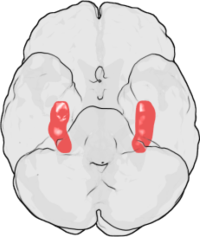
The
Social Media Starfish created by
Darren Barefoot (a Creative Commons license) illustrates some of what I call "6 Axes of Medical Education in Web 2.0 Style":
- Web feeds (RSS)
- Podcasts
- Blogs
- Wikis
- Custom search engines
- Second Life virtual world
Dean Giustini of UBC Academic Search - Google Scholar Blog posted his selection of
11+ Things of Note in Medical Web - Summer 2008. Here is my opinion on some of the services on the list. Please check the original post for all website links.
1. Surfing the mobile web - (i.e. Apple iPhone for physicians).Although I do not have an iPhone, I use the mobile web for medical information daily through the combination of Opera mobile browser, Windows Mobile-based phone (Moto Q9c) and unlimited mobile Internet (Sprint SERO).
2. Micromedia (or microbloggging) - (Twitter, Identi.ca).I started microblogging on Twitter just 2 months ago but already find it useful and entertaining which are the 2 most important components of any educational activity. It helps you follow the thought leaders in a particular field and communicate with like-minded people.
3. Micromedia Aggregation/search - FriendFeed (and microcarnival for doctors), Monitter, Twittersearch, Twellow.I integrated all my publication channels into into one "super-feed" in FriendFeed -- it includes blogs, Picasa photos, Twitter and Google Shared Stuff. Although I input quite a lot of information in FriendFeed, I rarely use the "output" -- there is just too much information "noise" there.
4. Social Networking - DoctorsHangout, Facebook, Genepartner, Healtheva, Intermedi, LinkedIn, Sermo, SocialMD, Within3.Although I have accounts for Facebook and Sermo, I do not use them regularly. Facebook is a nice way to stay in touch with colleagues and friends, but they can just follow my blogs instead.
5. Personal health tracking - My Digital Health, Google Health, Medsphere, Microsoft HealthVault, Quantified Self.I started using Google Health immediately after its launch and so far I find it useful but not great. I tried Microsoft HealthVault but did not find it very compelling and do not use it currently.
6. Video aggregation - YouTube, bliptv, WebMed Technology.I use YouTube quite often both as a viewer and "director" -- many of my travel videos are uploaded there. It is easy to upload videos but the conversion quality is grossly insufficient.
7. Bookmarking & infoclouds - Amedico, CiteMD, Connotea, Delicious, Diigo, LabMeeting, PeerClip, Wordle.I use Google Bookmarks daily and although it is not a social media service yet since you do not share your links, it gets the job done for basic bookmarking.
8. Virtual reality - Lively, Second Life.I have accounts for both Lively and Second Life but never use them. They would just take up too much of the little time I have and one has to set the limits somewhere.
9. Google/Wikipedia challengers - Cuil, Knol, Medpedia.Wikipedia is a vast and useful resource, and in general, getting better. Regarding Google Knol, I do not see why an expert cannot just have a blog to share his knowledge instead of a "knol'...
10. Medical search - InfoMedmd, Ologeez.Currently, I limit my medical searches to Pubmed, plain old Google, Google Scholar and UpToDate. This approach provides the answer in 99.9% of the cases.
11. Web 2.0 leaders.Berci Mesko,
Joshua Schwimmer and Dean Giustini are currently the best people to follow if you want to stay on top of the new developments in Web 2.0 and medicine. I expect this to change as Berci graduates from medical school next year and will have less time for blogging but he is such a discovery/publishing machine that there may not be a slowdown at all.
 From EfficientMD:
From EfficientMD:


















